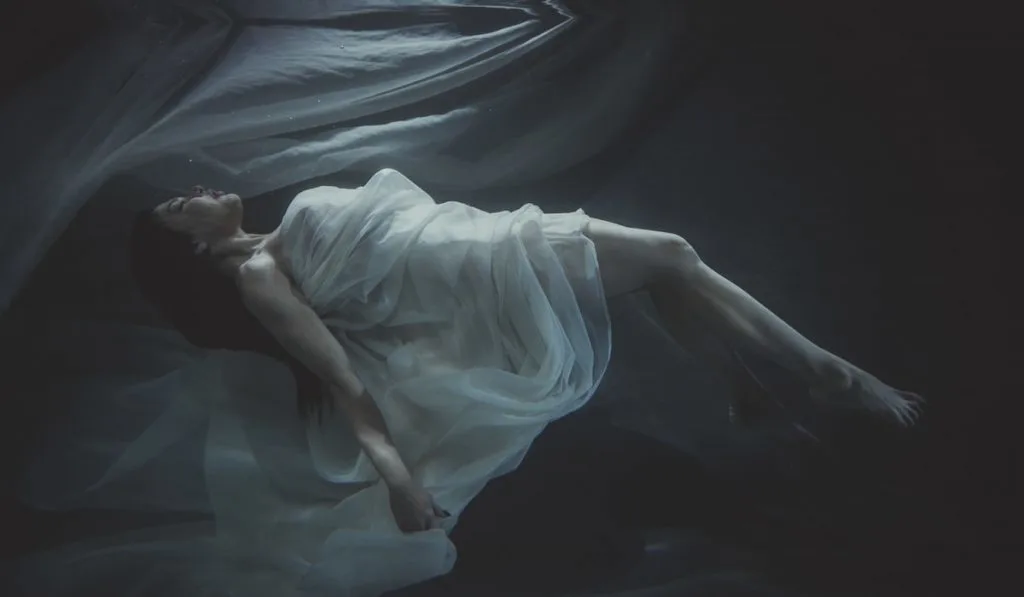Jumping across high rooftops, flying over the city, being chased by a terrifying creature but can’t move, teeth falling out, returning to the old house where you used to live as a kid – our dreams create situations similar to real life, but also new ones that contain familiar elements.
Some people don’t remember their dreams the next morning when they wake up.
Some, on the other hand, believe they don’t dream at all, even though science says we all dream, we just may not remember upon waking, and others even dream in black and white. Let’s explore more!

When Do We Dream?
Our sleep cycle consists of 5 stages:
Phase 1: Muscle activity is reduced, eye movement slows, and sleep is light. This phase makes 4-5% of total sleep.
Phase 2: Brain waves become slower and eye movements stop. This phase makes 45-55% of our total sleep.
Phase 3: Delta waves (very slow brain waves) appear, together with small, faster waves that intersperse them. This is 4-6% of our overall sleep.
Phase 4: Our brain starts producing delta waves. In phases 3 and 4, we’re in a state called “deep sleep”.
It’s very hard to wake up a person when in these stages. Even if you manage to do it, the person will feel very disoriented for a couple of more minutes after waking up.
This phase accounts for 12-15% of our sleep.
Phase 5: This is the ‘rapid eye movement’ (REM) stage. The eyes go in various directions, and our breathing becomes more irregular, shallow, and faster in general.
Our limb muscles are paralyzed in this phase, while the heart rate and blood pressure go up.
This stage forms 20-25% of our total sleep time and comes as the one where dreaming happens.

What Are Dreams?
Dreams are vivid images and stories our brain creates while we sleep. These stories can be fun, entertaining, and romantic, but can also turn into quite disturbing, scary, or bizarre scenarios.
While dreaming, we have reduced control over what’s happening even though the things we’re going through seem pretty real. Only in the morning, after getting up, can we differentiate dreams from real-life events.
Our body is specially wired not to do any actions when we’re dreaming.
During the REM phase, most of our muscles are relaxed, which stops us from acting out our dreams.
Because our dreams often involve intense emotions, this mechanism keeps us safe when sleeping.
Both babies and adults tend to dream for about two hours per night – even though we forget 95% of the dreams we had shortly after waking up.
Studies show we usually have a couple of dreams every night, each one lasting from 5 to 20 minutes long. That means we spend an average of six years dreaming!
Can People Dream in Black And White?
Even though most of us generally dream in color, around 12% of people claim they dream in black and white.
Scientists have conducted studies where they found subjects who were under 25 almost never report having black and white dreams. However, people over the age of 55 reported having these around 25% of the time.
Older studies indicated this may happen because people in the different age groups weren’t all exposed to watching TV in color.

Dreams are a personal experience based on our very own feelings, life conditions, and individual state of mind. With this in mind, it’s easy to assume people who grew up in different circumstances may not dream the same way.
In these studies, those who were over 55 mostly grew up with black-and-white television.
Of course, they could see the colors in the world surrounding them, but they didn’t have the approach to vivid cinematography we have today.
Scenes we watch create vivid images that get imprinted in our brain – which encourages our brain to create the same later when we’re dreaming.
What’s more interesting is that studies showed that people in the 1940s almost never reported dreaming in color.
More Interesting Facts About Dreams
We tend to have negative dreams more than happy ones.
Researcher Calvin S. Hall collected more than 50,000 dream reports from college students over a period of around 40 years. His studies showed we experience a wide variety of emotions while dreaming.
Plenty of factors affect the emotional part of our dreams, including anxiety, the stress we have in our everyday lives, or certain medications.
He also realized negative dreams are simply more common – and anxiety is the emotion that often occurs there.
Our Body is Paralyzed While Dreaming.
As we’ve mentioned, dreams can be so vivid we may think we need to act them out in the real life, too.
That’s why our body needed to come up with a mechanism that will keep us safe while sleeping – hence paralysis during the REM phase. To be precise, our body doesn’t move because our motor neurons are not stimulated.

Sometimes we can even wake up in the middle of the night and still be paralyzed – which is something known as sleep paralysis. It can last up to 10 minutes, and people who’ve experienced this condition describe it as quite frightening.
However, experts say it’s a normal thing that lasts a couple of minutes before we gain normal control over our muscles again.
Blind people dream too.
However, their dreams are a bit different from those sighted people have. What blind people see in their dreams depends on lots of factors, including when exactly they lost their sight.
One study discovered the blind participants had fewer eye movements during the REM stage than the sighted people, but they still reported the same dream sensations – which included visual elements.
We remember our dreams on weekends better than during the working days.
This happens because each REM phase lasts longer than when we need to wake up earlier and go to work.
Also, over the weekdays we tend to go through more everyday stress, which is why our sleep is often better and deeper when we have days off.
Kids experience more nightmares than adults.
Nightmares are bad dreams that come with scary elements. They usually start between the ages of 3 to 6 and become more frequent after kids turn the age of 10.
Some Final Words
Our dreams are stories full of highly emotional and vivid scenes that contain different concerns, situations, figures, themes, and objects that largely remind us of real life. Many factors shape our dreams: things we experience in everyday life, stress, things we think about, life circumstances, etc.
We all mostly dream in colors, but different life conditions and experiences resulted in some people having 25% of their dreams in black and white.
This is largely accurate for a test group aged over 55 since they mostly grew up without color television. Even though they could see colors in the world that was surrounding them, colorful cinematography created vivid scenes and images, after which more and more people reported dreams in colors.
Resources:
- https://www.psychreg.org/why-some-people-dream-in-black-and-white/
- https://www.medicalnewstoday.com/articles/284378#_noHeaderPrefixedContent
- https://www.nytimes.com/2008/12/02/health/02real.html
- https://www.sciencedirect.com/science/article/abs/pii/S1053810008001323?via%3Dihub
- https://www.verywellmind.com/facts-about-dreams-2795938#citation-1
- https://www.sleephealthfoundation.org.au/facts-about-dreaming.html
- https://www.sciencedirect.com/science/article/abs/pii/S1053810008001323?via%3Dihub
- https://www.spiedigitallibrary.org/conference-proceedings-of-spie/10453/2276048/Rapid-Eye-Movements-REMs-and-visual-dream-recall-in-both/10.1117/12.2276048.short?SSO=1
- https://www.healthline.com/health/facts-about-dreams#nightmares
- https://www.psychreg.org/why-some-people-dream-in-black-and-white/
- https://medium.com/swlh/do-you-dream-in-color-370333a42c5a
